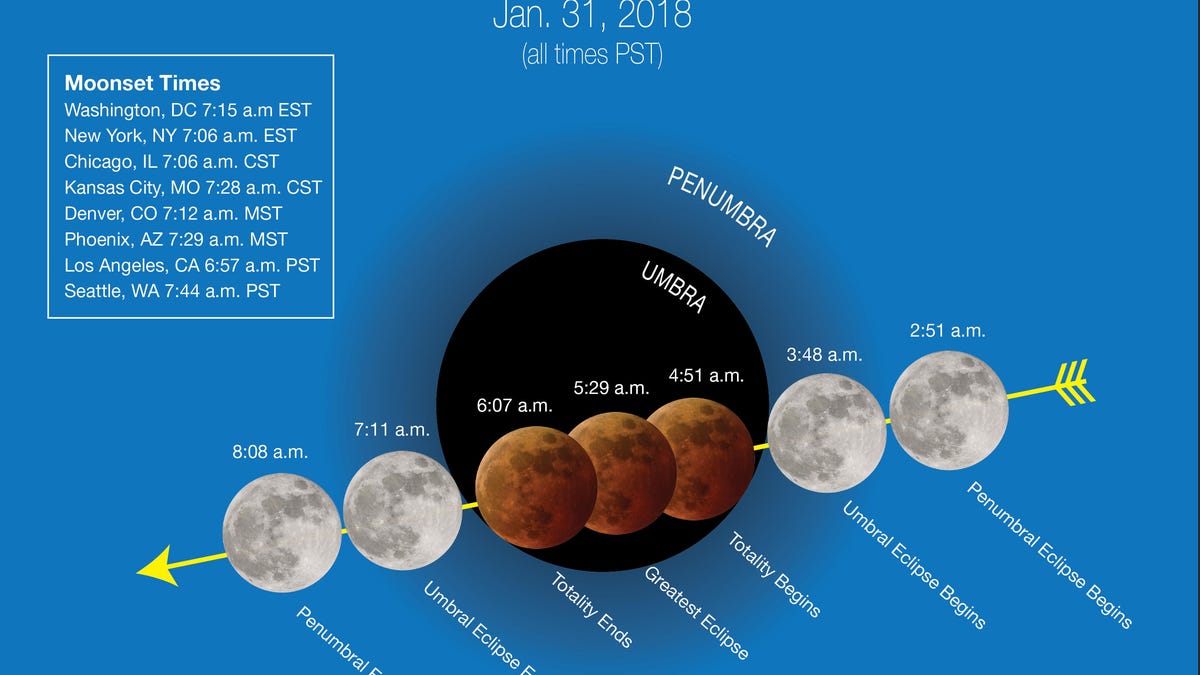Blue moon 2018: How to see the supermoon on Jan 31.
Here's how to see this incredibly rare phenomenon in person or online.

This NASA chart shows the lunar eclipse times for the US.
Jan. 31 will be a trifecta of lunar awesomeness. For the first time in 150 years, there will be a super blue blood moon. This means:
- The moon will be a "supermoon," which is when the Earth is closer than usual to its satellite. The moon will be 223,068 miles (358,994 km) from Earth, instead of the average distance of 238,855 miles (384,400 km), making the moon 14 percent brighter than usual, according to NASA.
- It's the second full moon of the month, which is known as a "blue moon." This doesn't make it look any different, it's just a quirk of the calendar.
- The moon will also be moving through the Earth's shadow, which will create a total lunar eclipse in some areas. This will give it a reddish tint, which is called a "blood moon."
Here's how to get a good look at this once-in-a-lifetime phenomenon.
Where it will appear
Unfortunately, not everyone will get a live, front-row seat to the super blue blood moon.
"For the (continental) US, the viewing will be best in the west," said Gordon Johnston, program executive and lunar blogger at NASA Headquarters in Washington.
Here's how things break down:
- The best viewing time for the East Coast is 6:45 a.m. ET. You'll need to be in a high location to see the moon because it will be so low in the west-northwest sky.
- Those in the middle of the US will be able to see the start of the eclipse at 4:51 a.m. CT. From 6:15 a.m. to 6:30 a.m. CT will get its best viewing time.
- People living in the Rocky Mountain region will get the best view around 6:30 a.m. MT.
- The West Coast will get the best view between about 5 a.m. and 6 a.m. PT.
- Asia, the Middle East, Australia, eastern Russia and New Zealand can see the eclipse during the morning moonrise on Jan. 31, according to NASA. Sorry, UK.
Here is how the eclipse will look across the world.
How to see it online
If your local weather is calling for clouds that morning, you can still see the super blue blood moon. NASA TV's live feed will probably be your best chance to see it live if there's bad viewing weather in your location. The Griffith Observatory in Los Angeles is also doing a live feed at the lunar eclipse.
Virtual reality 101: CNET tells you everything you need to know about VR.
The Smartest Stuff: Innovators are thinking up new ways to make you, and the things around you, smarter.

